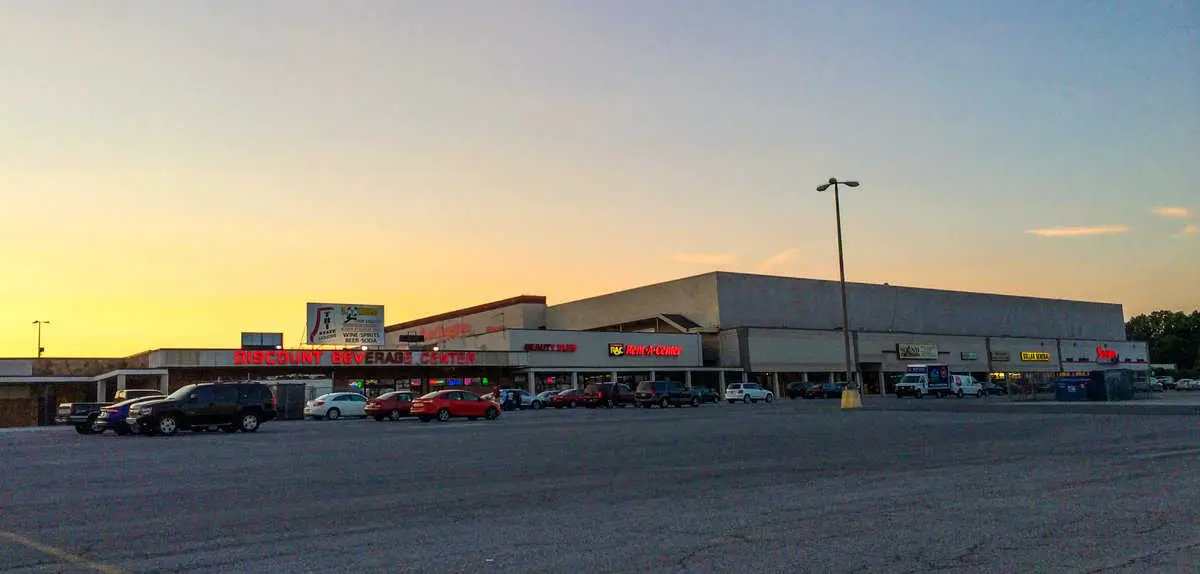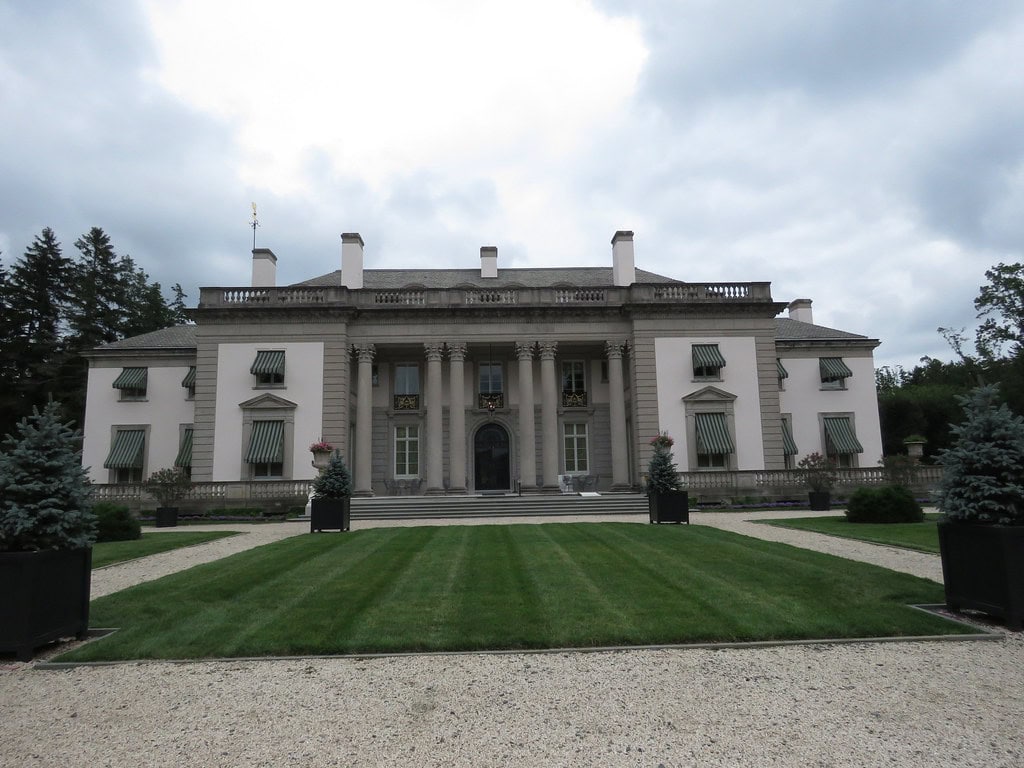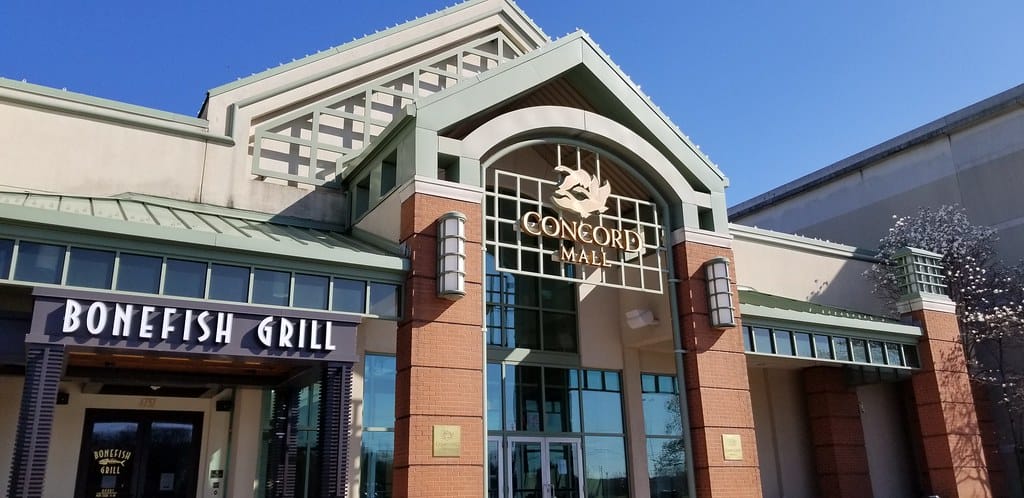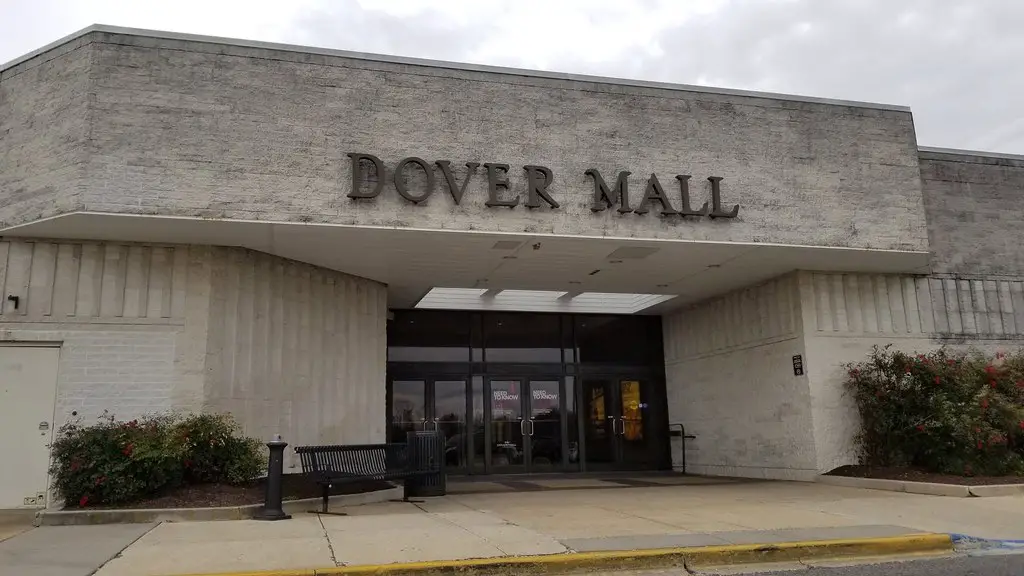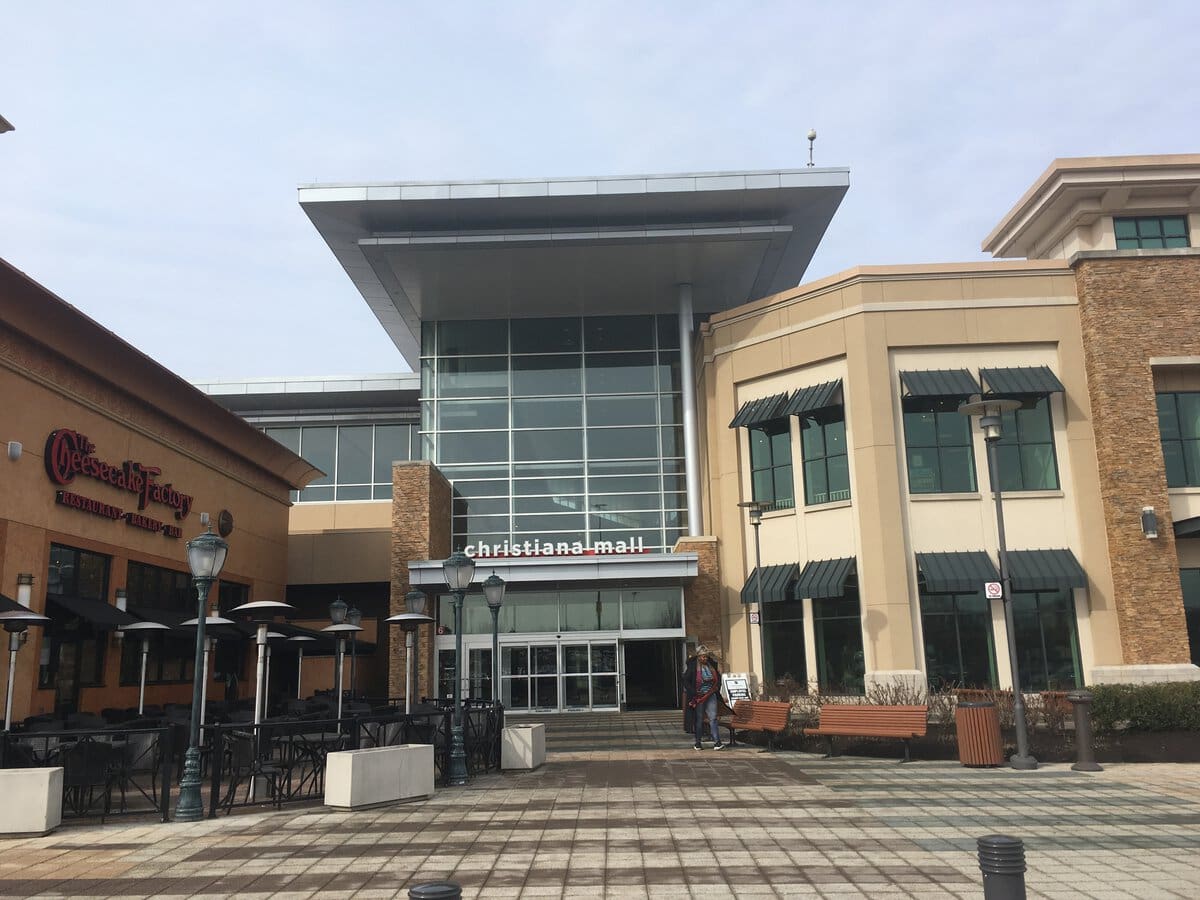A Mall You Could Hear Before You Saw
Walk through the parking lot at 655 S. Bay Road and picture 6,000 empty spaces stretching under the sun.
In August 1968, those stalls filled quickly: families heading for Woolco, teenagers slipping into the Dover Cinema’s air-conditioned lobby, someone following terrazzo tile toward Thrift Drug or the Torch House restaurant.
Blue Hen Mall didn’t need flash to draw crowds. It had a blue hen clock that crowed on the hour, fountains under a staircase, and a 60-foot movie screen that opened with Gone with the Wind.
Back then, it was Delaware’s first enclosed mall, and it pulled business away from downtown almost overnight.
Even the mural in the front hall, added in 1976, tried to say it plainly: this place belonged to everyone.
Breaking Ground and Making History (1966–1968)
Construction at the site began in September 1966, carved into farmland along Bay Road at a time when most shopping still happened on foot in downtown Dover.
The developer, Jardel Company, put forward a $5 million plan to build Delaware’s first fully enclosed shopping mall.
By August 1968, the structure opened with three anchors in place: JCPenney, Woolco, and Woolworth.
Each brand brought its own draw, but together they gave the building early weight and reason for traffic.
As foot traffic picked up inside the mall, retailers along Loockerman Street began to see fewer customers.
JCPenney had moved off that street to take the new mall lease.
Other merchants stayed put, but the shift in gravity had already started. The pull came from inside, and it had air conditioning.
Retail Flow and Architectural Pull (1969–1982)
Once the crowds came through the entry hall, they didn’t wander – they followed a layout that was built to guide them.
Blue Hen Mall used a classic dumbbell plan, with JCPenney on one end and Woolco on the other, and a movie theater plus Woolworth dead center.
Early shops filled in quickly. There was Thom McAn, Benjamins, and Hess Apparel.
Restaurants clustered near the cinema: Bavarian Pretzel, Russell Stover Candies, and a sit-down place called The Torch House.
China Garden served Americanized Cantonese in molded red booths under gold-accented wallpaper.
Cascading fountains and terrazzo floors added polish. The mezzanine level offered more than a view.
Law firms, dentists, and a military recruitment office worked from above.
A narrow balcony traced the edge, with public restrooms tucked into the middle and the waterfall just below.
The mall clock, shaped like a cube with four blue hens, hung above the center court and crowed hourly.
Its sound cut through the usual background of footsteps and echoing chatter.
When Dover Cinema opened in March 1969, it brought the first stadium-style seating to a Delaware mall.
The 60-foot screen played “Gone with the Wind” to mark the launch.
That same month, the Record Museum set up shop, later rebranded Sound Odyssey, and settled in near Woolworth.
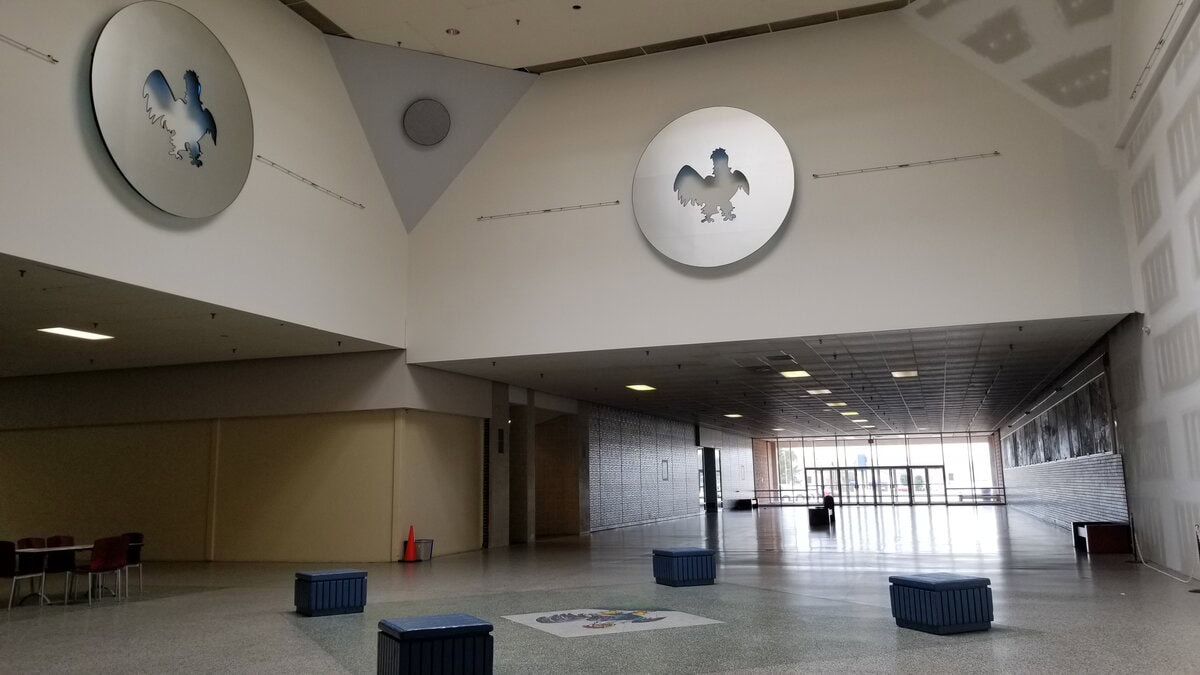
Market Split and Retail Shifts (1982–1994)
The day Dover Mall opened in 1982, four miles up the highway, Sears cut the ribbon at its new location.
Sears had once tried to negotiate for space at Blue Hen Mall but couldn’t reach terms with Jardel Co., the property’s developer.
That decision echoed through the next decade. Woolco shuttered in early 1983, and Roses moved into the old space later that year.
Around the same time, two six-screen multiplexes opened in the area, pulling traffic from Dover Cinema, which had already been struggling.
The single-screen theater closed around 1985.
In 1987, Blue Hen Mall tried a reset. A $400,000 renovation added neon-accented signs and modernized the center court.
But the clock came down on August 27 that year, and the fountains grew quieter. By then, national retailers had thinned.
Still, stores like Radio Shack and GNC stayed open into the 1990s, joined by local tenants like Sheila’s Craft and Party World and First State Coin.
JCPenney left in August 1993, relocating to a new space inside Dover Mall.
Woolworth followed after the 1993 holiday season. Roses shut down by March 19, 1994.
Each exit left another shadow in the tiled corridor that once echoed with storefront music.
Live Acts and Empty Seats (1987–1998)
By fall 1987, the old theater space wasn’t showing movies anymore.
Earle Teat, a local musician and business owner, signed a lease and renamed it the Blue Hen Mall Concert Hall.
He put $30,000 into lighting rigs and sound gear and started booking country acts.
Tammy Wynette played that first season, followed by Chubby Checker in 1988, Marty Stuart in 1991, and Johnny Cash with June Carter Cash in 1992.
The setup ran tight. Each performer typically did two shows a night, 7 pm and 10 pm, with 748 seats sold for each if the house filled.
The theater still had the wide screen, but most attention shifted to the risers and speakers set up for touring road crews.
Between gigs, Teat ran his music shop down the corridor, past shuttered storefronts and through air that no longer smelled like Bavarian pretzels.
Attendance dipped more than once.
The original cinema’s indoor box office and cry room for families didn’t mean much when the music couldn’t draw crowds.
Some weeks, the hall sat dark. Others, only a few rows were filled. By the late 1990s, the last act finished their set, and the doors closed for good. The marquee didn’t change again.
Government Services Take Over the Lease (1995–2025)
By 1995, after the anchor stores had exited and retail collapsed, the owners of Blue Hen Mall began leasing space to state and federal agencies.
Inside what had once been corridors of chain stores, the State of Delaware placed core branches of its social services infrastructure.
The Division of Social Services took offices for food stamps, child care support, Medicaid enrollment, and TANF programs.
The Women, Infants, and Children (WIC) program, run through the Division of Public Health, established its own clinic in Suite 1C.
The Department of Labor brought in multiple divisions, Unemployment Insurance, Vocational Rehabilitation, and Employment & Training, based out of Suite 2H.
All operated year-round, and their physical layout was shaped by the mall’s original bones: long rectangular suites with entrances carved into former storefront frames.
On the federal side, the U.S. Social Security Administration moved in, offering public access to benefit processing and account services.
Then, in March 2021, the Department of Veterans Affairs opened the Kent County VA Clinic in Suite 3C.
That outpatient facility added primary care, lab services, women’s health, addiction support, and PTSD treatment.
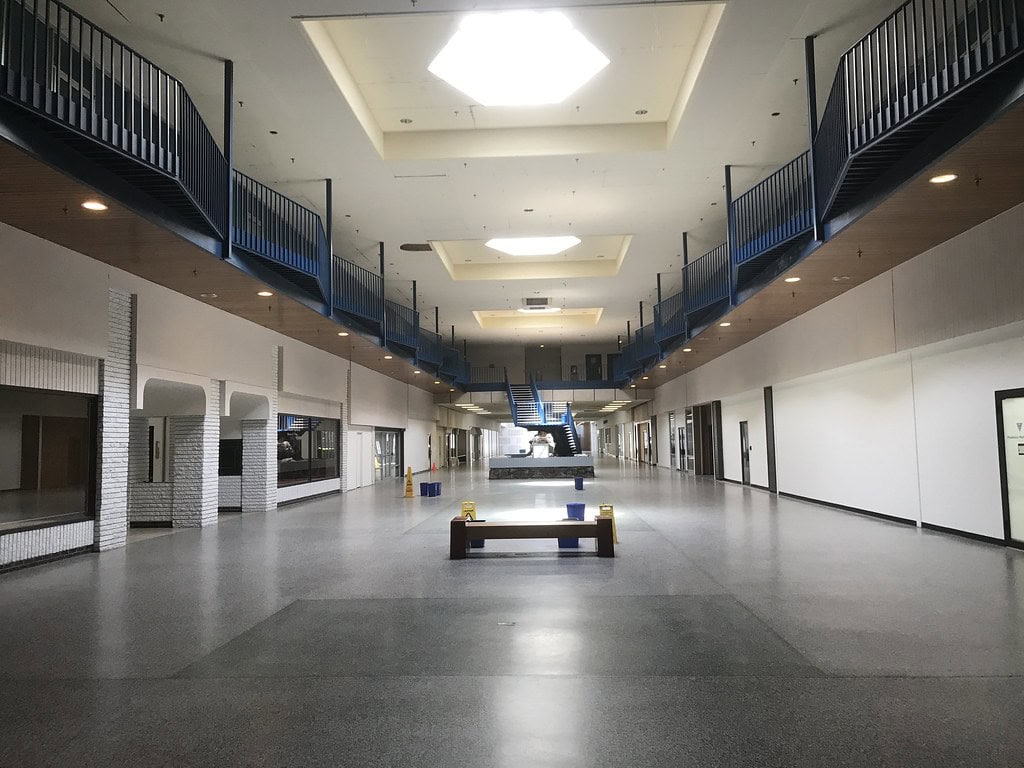
Lease Conversions and Office Buildouts
In early 1995, the old mall signage added two new words: “Corporate Center.” JCPenney’s space became an office for 300 Aetna employees.
Roses, once a department store, turned into a call center for NationsBank, which later became part of Bank of America.
These weren’t pop-up solutions. The spaces were gutted and rebuilt to suit the needs of long-term tenants.
Fluorescents replaced fountain light, and carpet went where terrazzo once shimmered.
Retail didn’t disappear all at once. Radio Shack stayed open. So did a few independents.
The goal, according to mall owners, was to balance storefronts that served workers inside with services that could still pull from the neighborhood. It worked for a while.
In 2006, Blue Hen Properties sold the site to Pettinaro Enterprises for $17.4 million.
Pettinaro promised $10 million in upgrades and followed through.
They replaced windows, repaired stucco, planted new landscaping, and added dedicated entrances for office wings.
Bank of America closed its call center later that same year. Aetna left in 2009.
The interior walkways stayed open to the public until 2020, when pandemic closures gave management the final nudge.
After that, only tenants and staff had access. The mall as a pass-through was done. But the flooring still showed where the shops had been.
Medical Redevelopment and Property Reuse (2013–2025)
In September 2013, Bayhealth Medical Center signed a lease for the old JCPenney wing.
What used to be a department store, then a corporate office, was stripped out and rebuilt.
By the time the dust settled, it held administrative offices, IT services, and a sports medicine unit.
It was a full interior overhaul, but the exterior still hinted at what used to be there.
In January 2022, Bayhealth purchased both original endcaps of the building, JCPenney on one side, Woolco/Roses on the other.
That acquisition, finalized for $17 million, marked a pivot. Work on the Woolco wing moved fast.
Crews rebuilt the facade, tore out what remained of the interior layout, and replaced it with medical suites designed for outpatient care.
Bayhealth at Blue Hen opened its final phase in October 2024, adding pulmonology, endocrinology, occupational health, lab draws, ECG services, walk-in care, and therapy offices.
The older entrances now lead to waiting rooms. There are patient chairs where displays once stood.
Some walls carry framed health posters. Others still hold the angles of retail glass.
From the outside, the shift feels complete.
Inside, the floors run smoothly and quietly, but if you stand still long enough, you might notice the HVAC hum where music used to play.
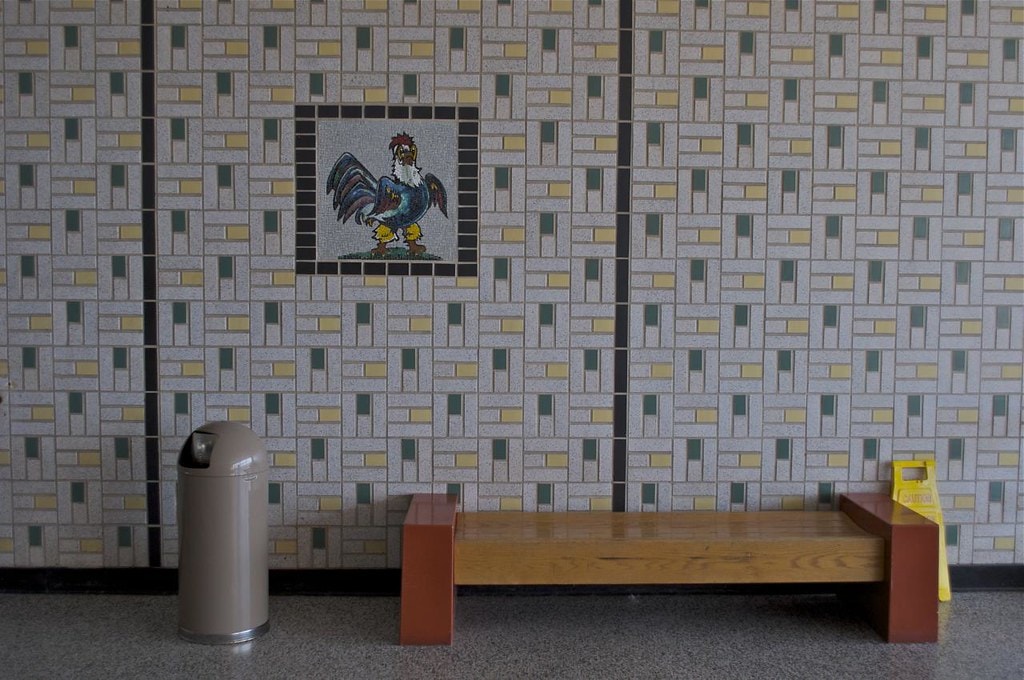
🍀

